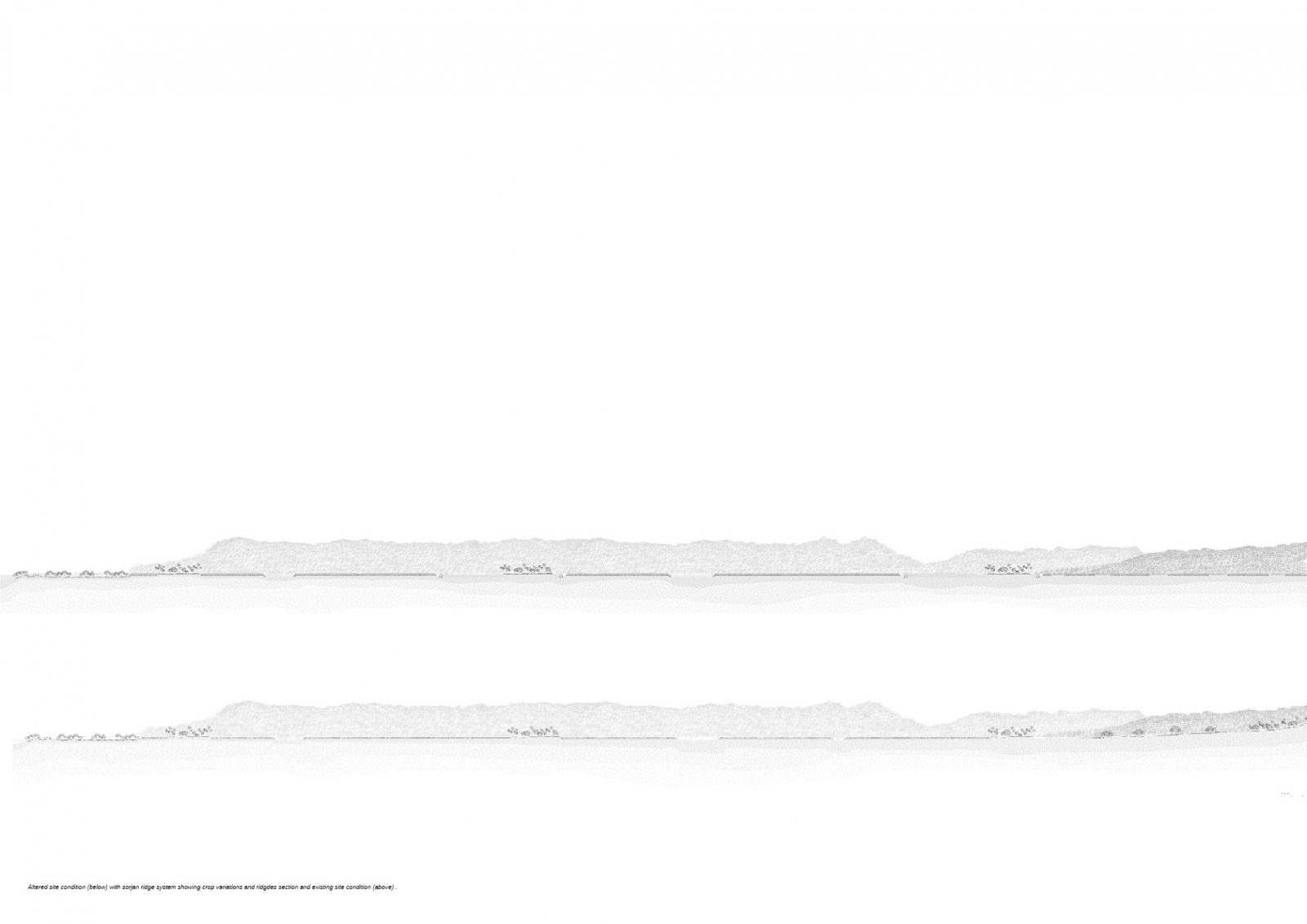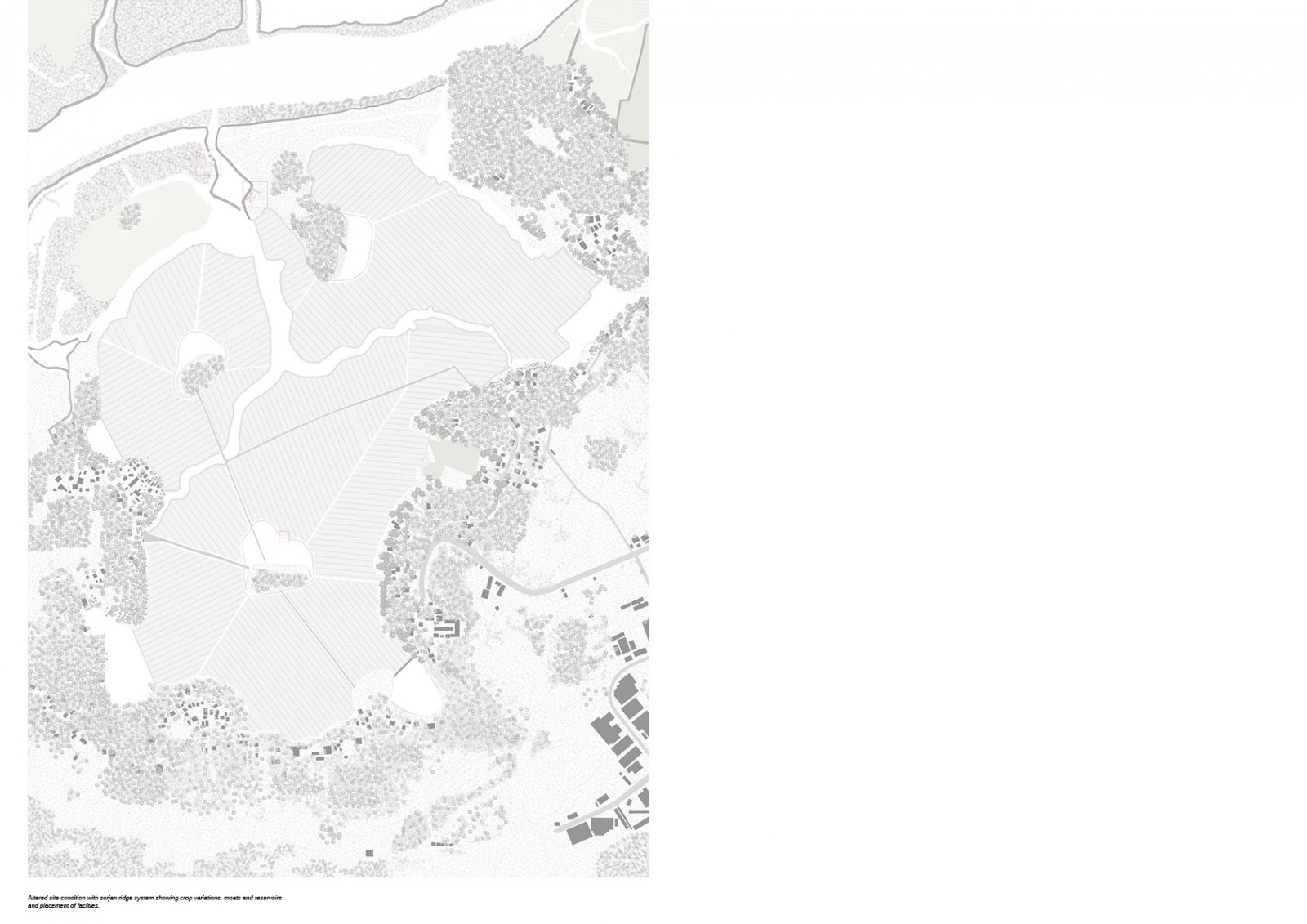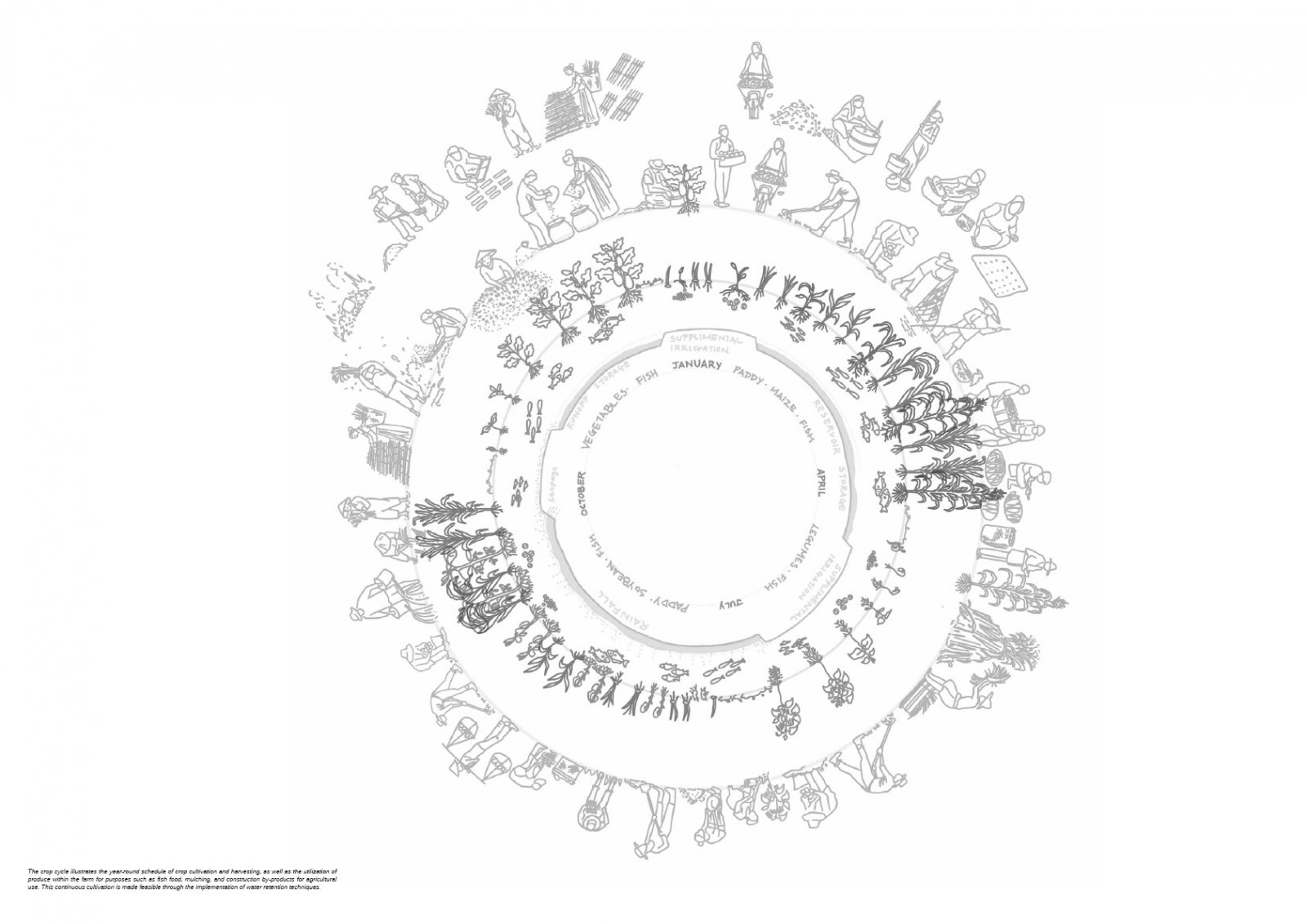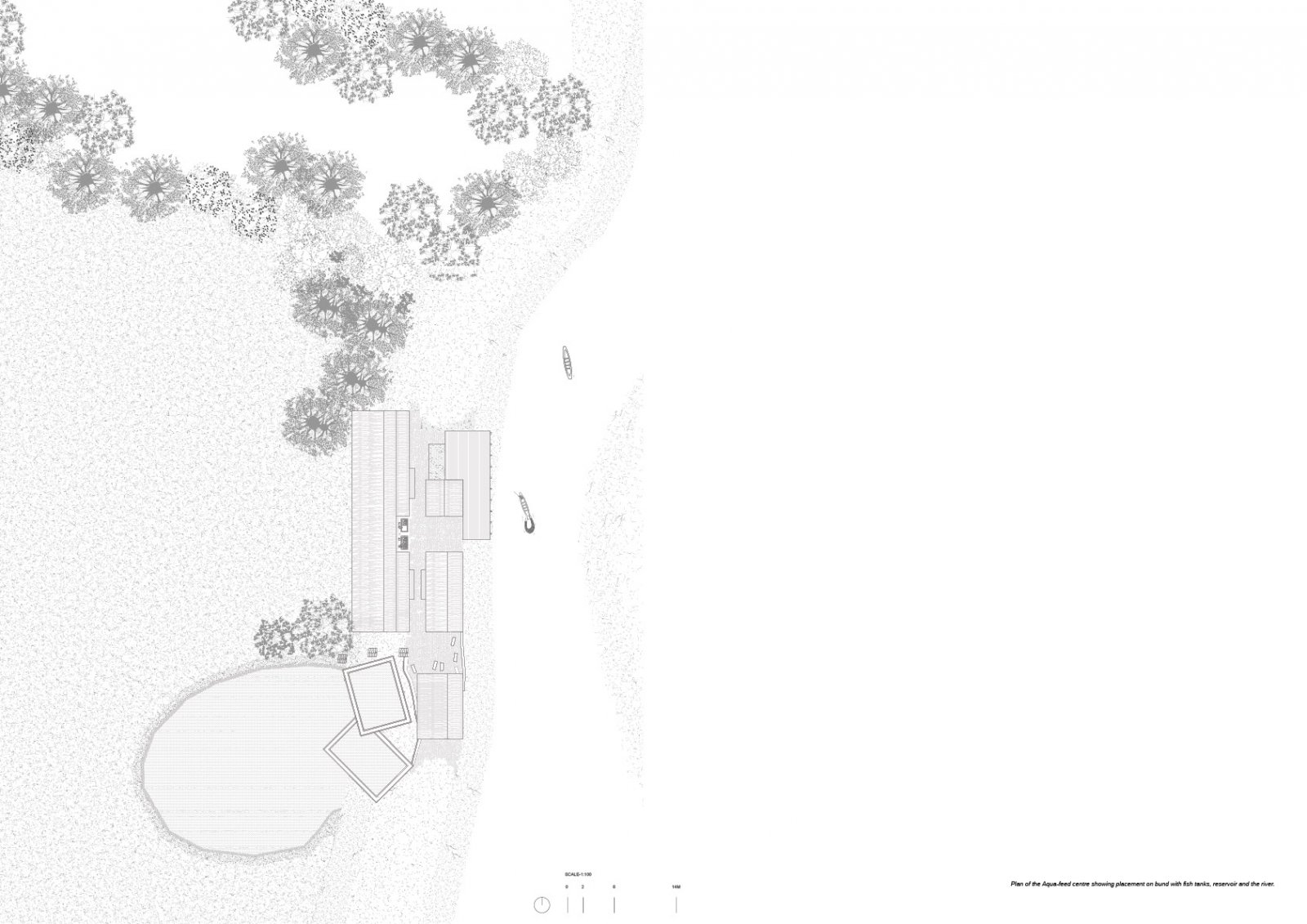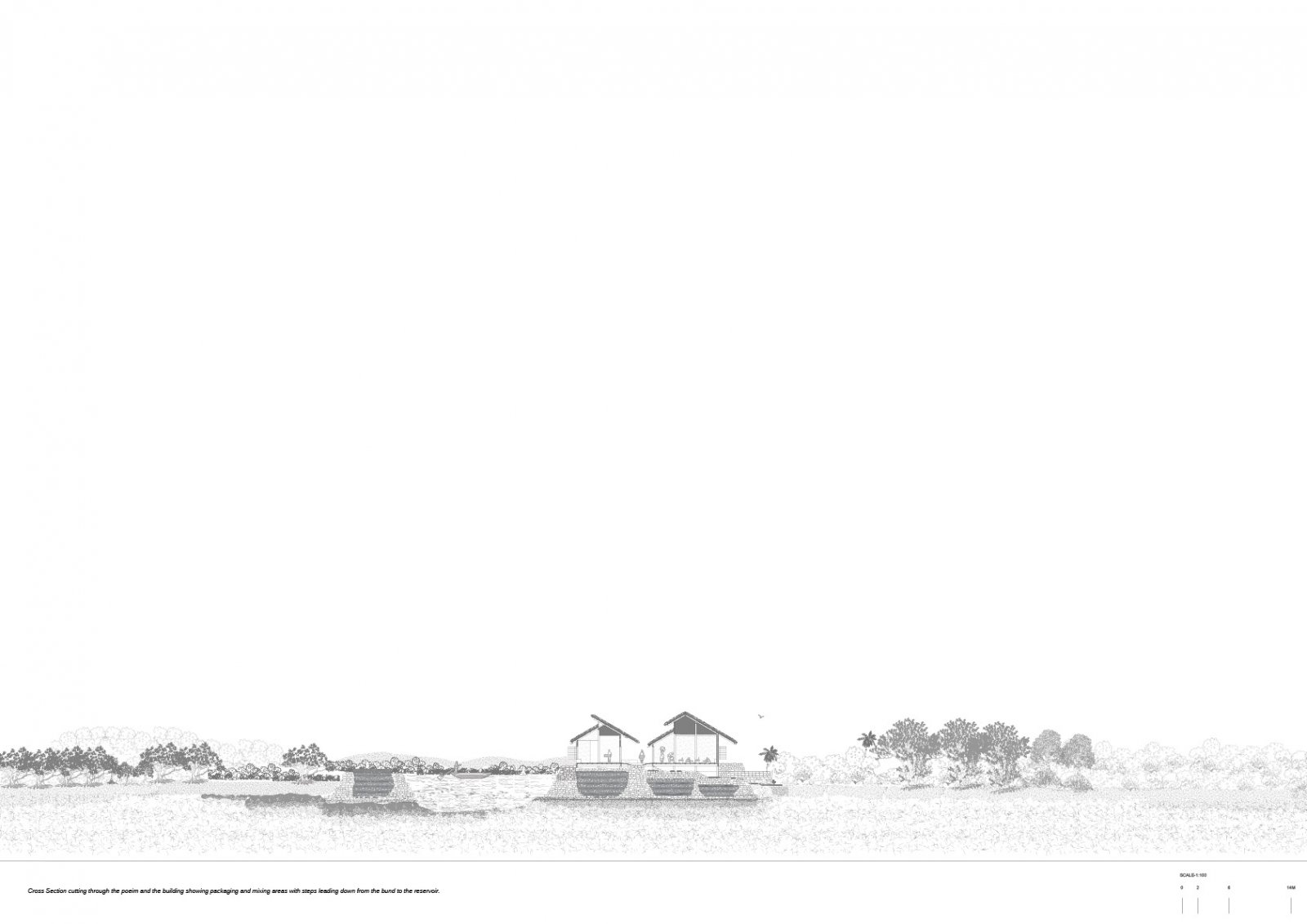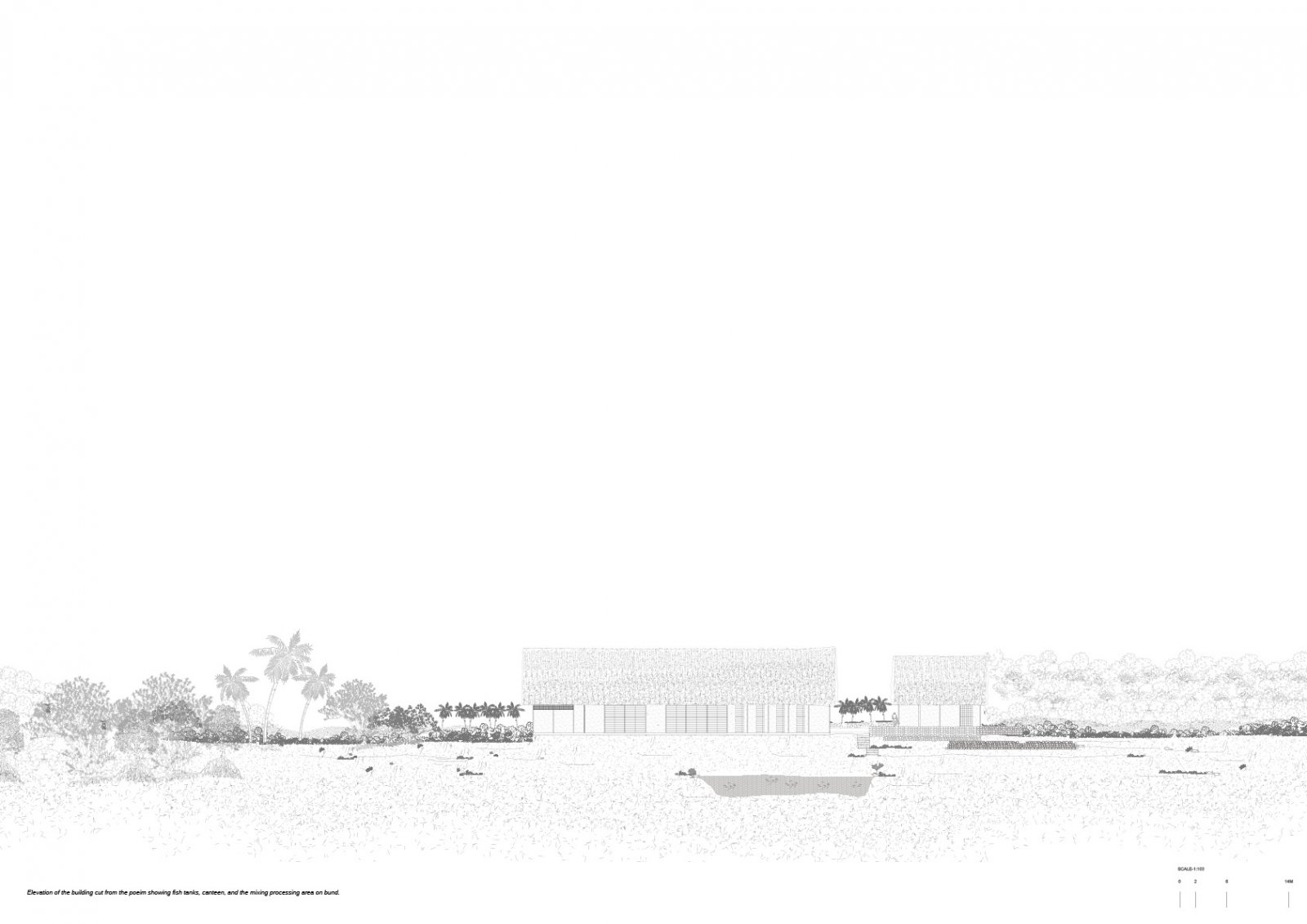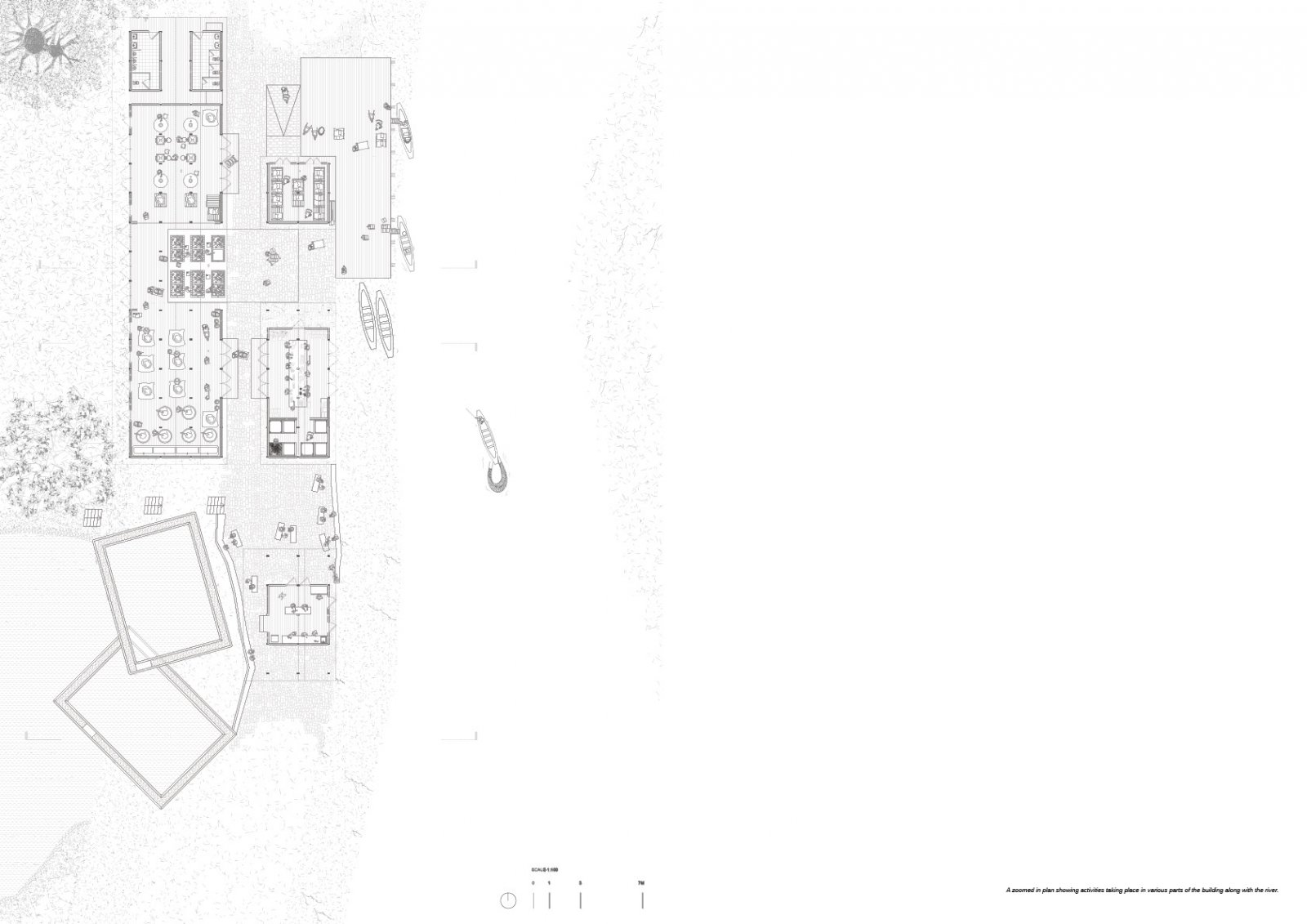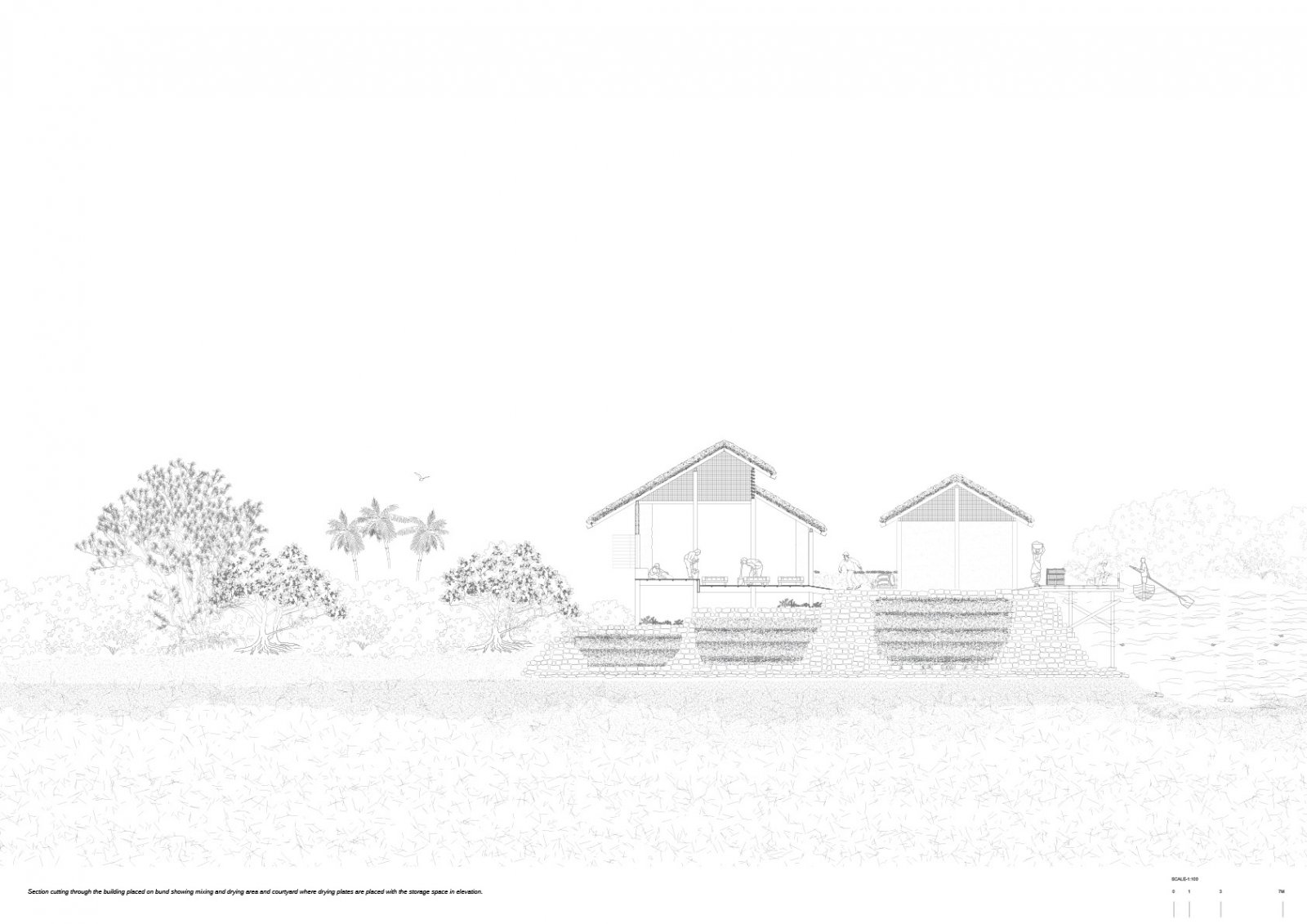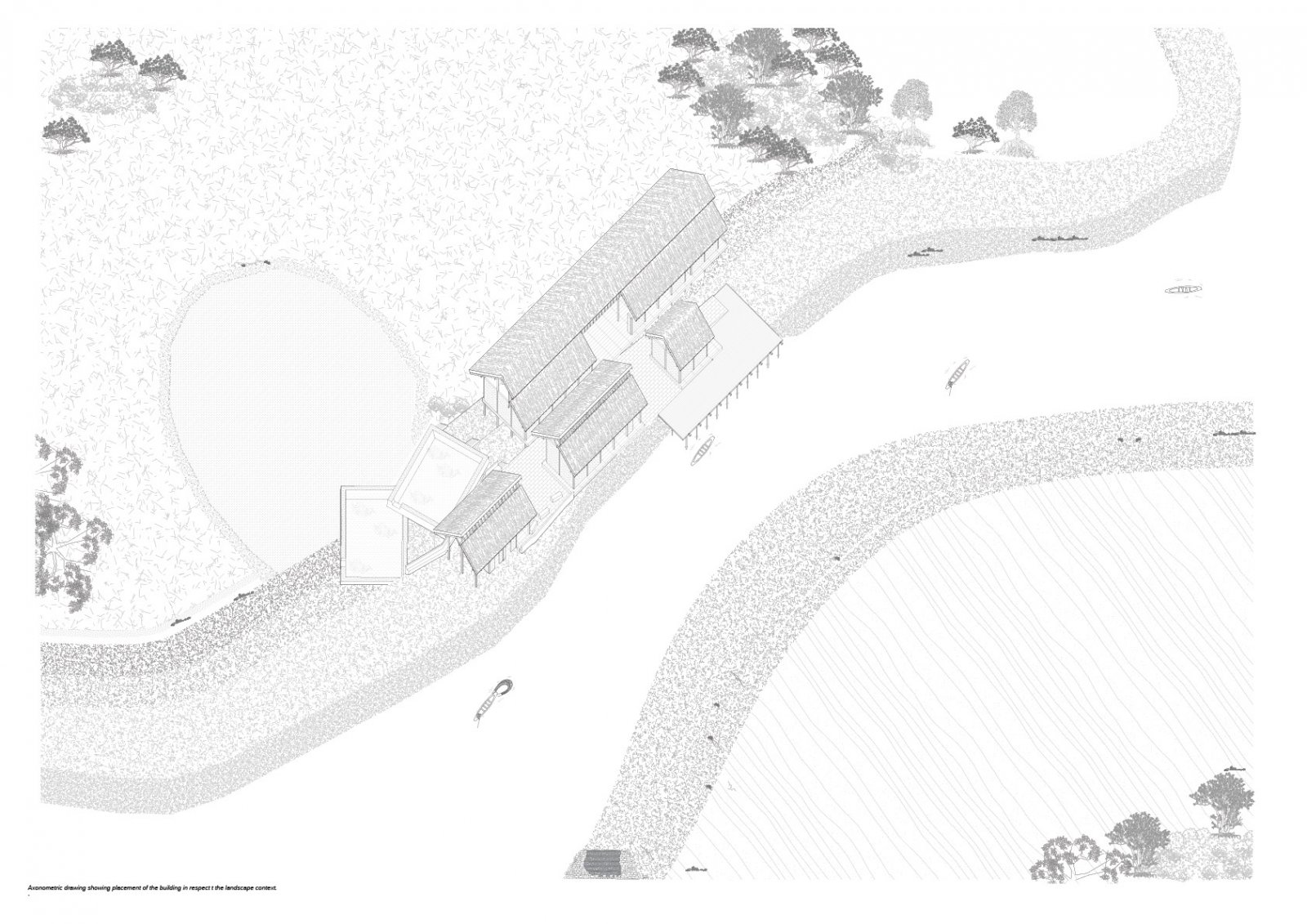Your browser is out-of-date!
For a richer surfing experience on our website, please update your browser. Update my browser now!
For a richer surfing experience on our website, please update your browser. Update my browser now!
In recent years, communal farming practices in Khazan lands have declined, with private farming becoming more prevalent. However, many private farms neglect important techniques like crop rotation and integrated fish-rice farming, largely due to difficulties in managing freshwater and saline water levels. This has led to a pattern where paddy is grown only during the monsoon season, leaving the land unused for the rest of the year. To address this, efforts are underway to revive common agriculture, focusing on maintaining a balance of fresh and salty water for farms. This design integrates a meticulous crop cycle with efficient fish farming practices, creating a harmonious agricultural ecosystem. Utilizing crop by-products such as paddy straws or coconut coir, fish are cultivated in designated ponds or poims throughout the year. During the monsoon and winter, fish thrive in paddy fields, aiding in natural fertilization, while crops benefit from fish waste. As seasons change, fish are transferred to reservoirs, ensuring continued growth, and harvested during summer. Excess crops are processed into aquafeed, providing nutrition, while residues become organic fertilizers, optimizing resource efficiency and establishing a closed-loop system that promotes environmental stewardship.

